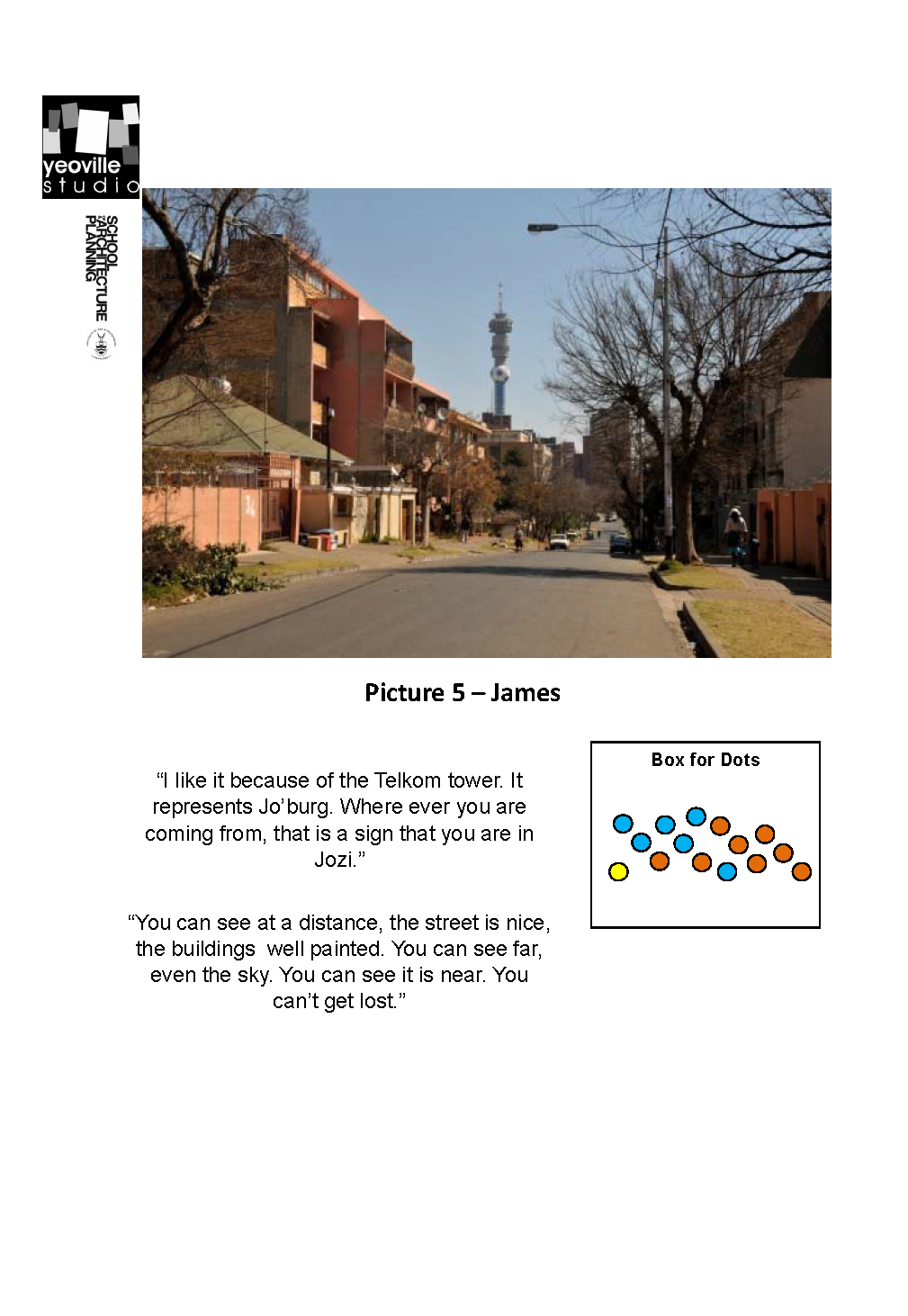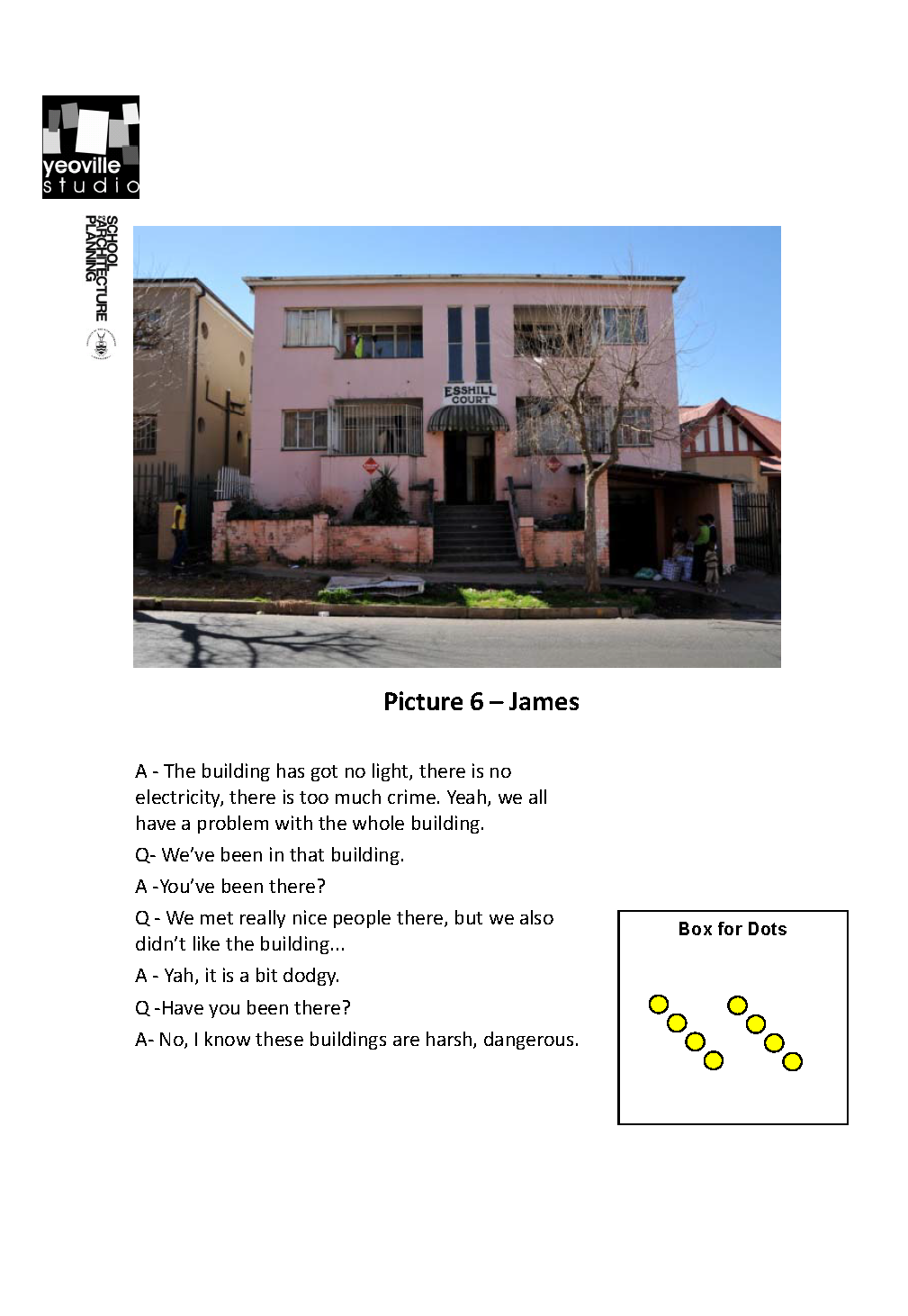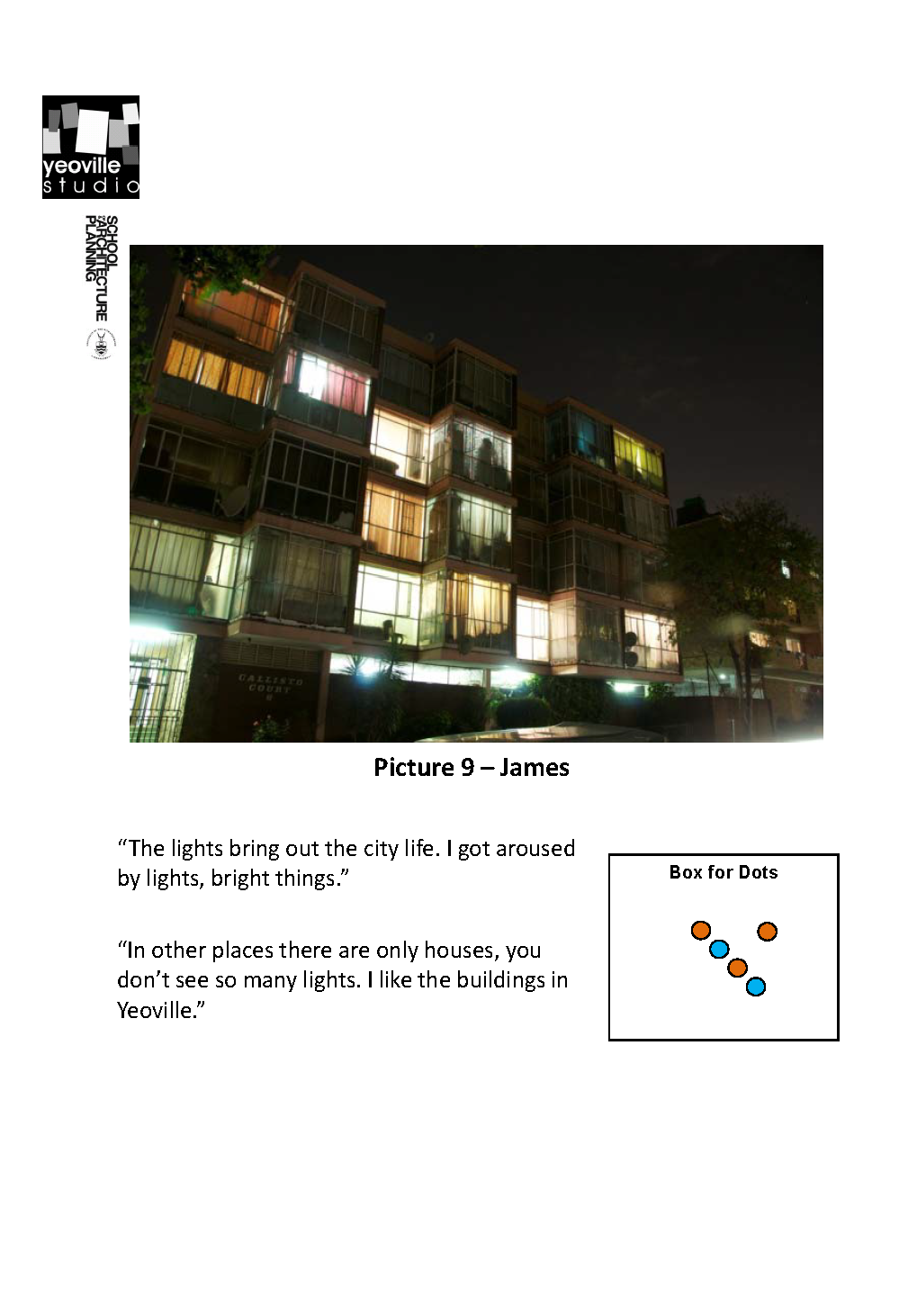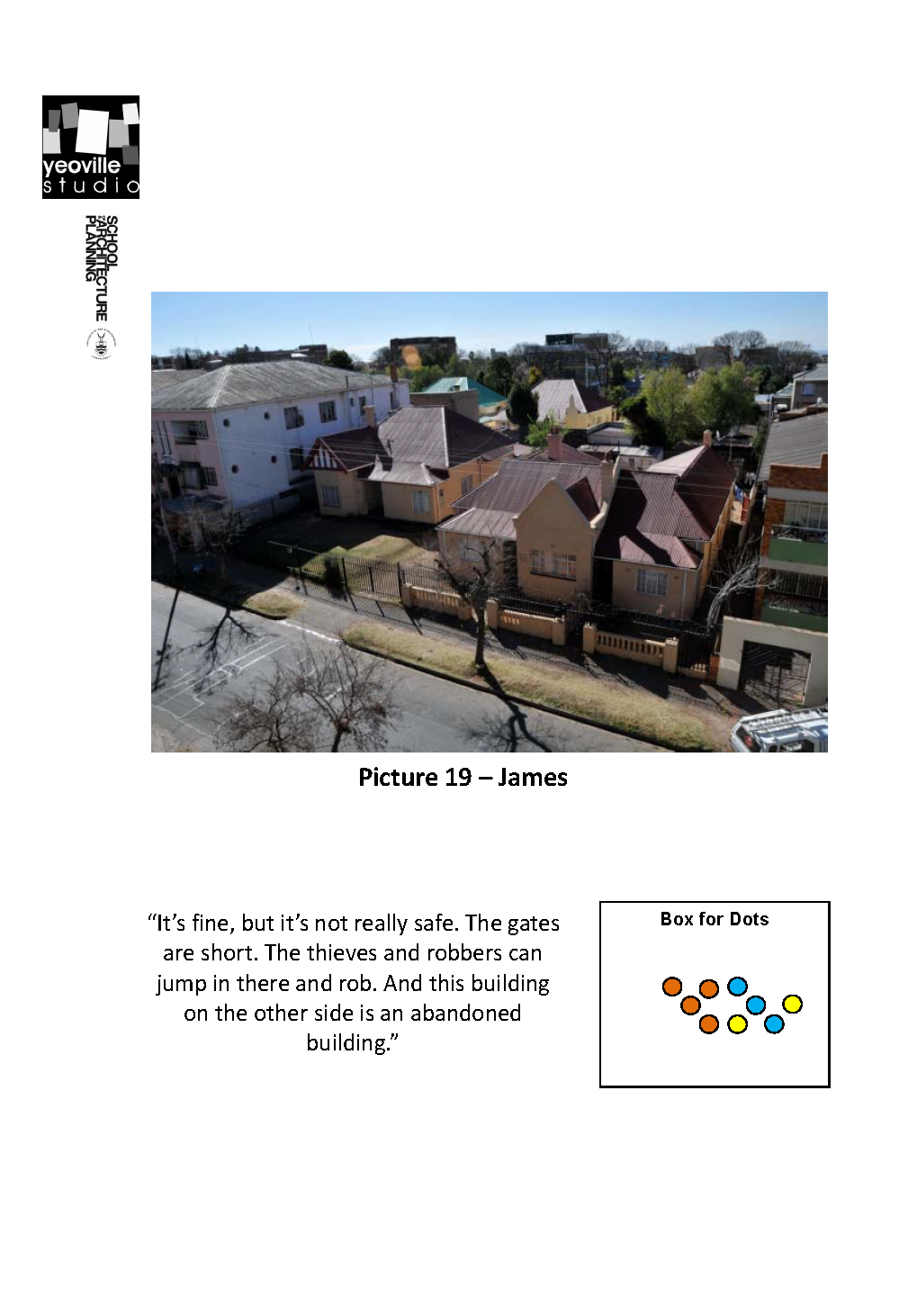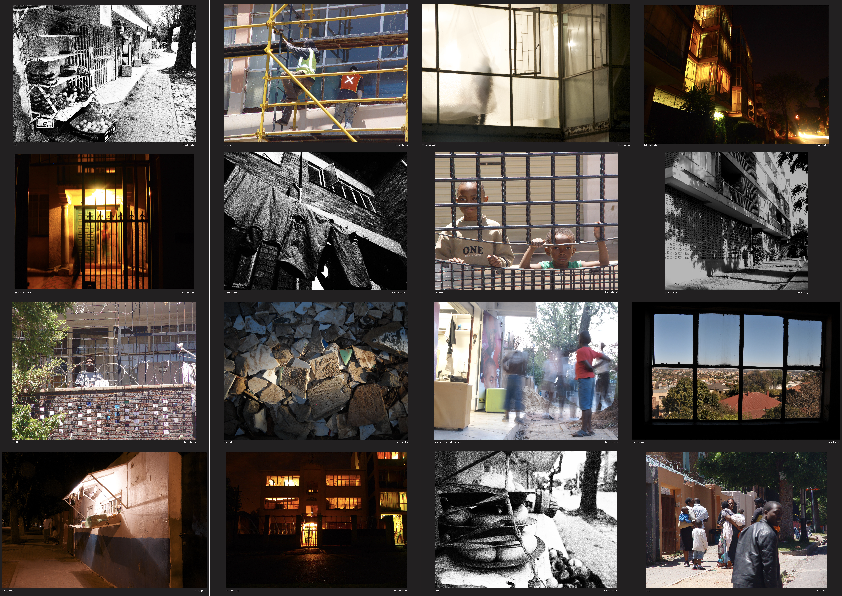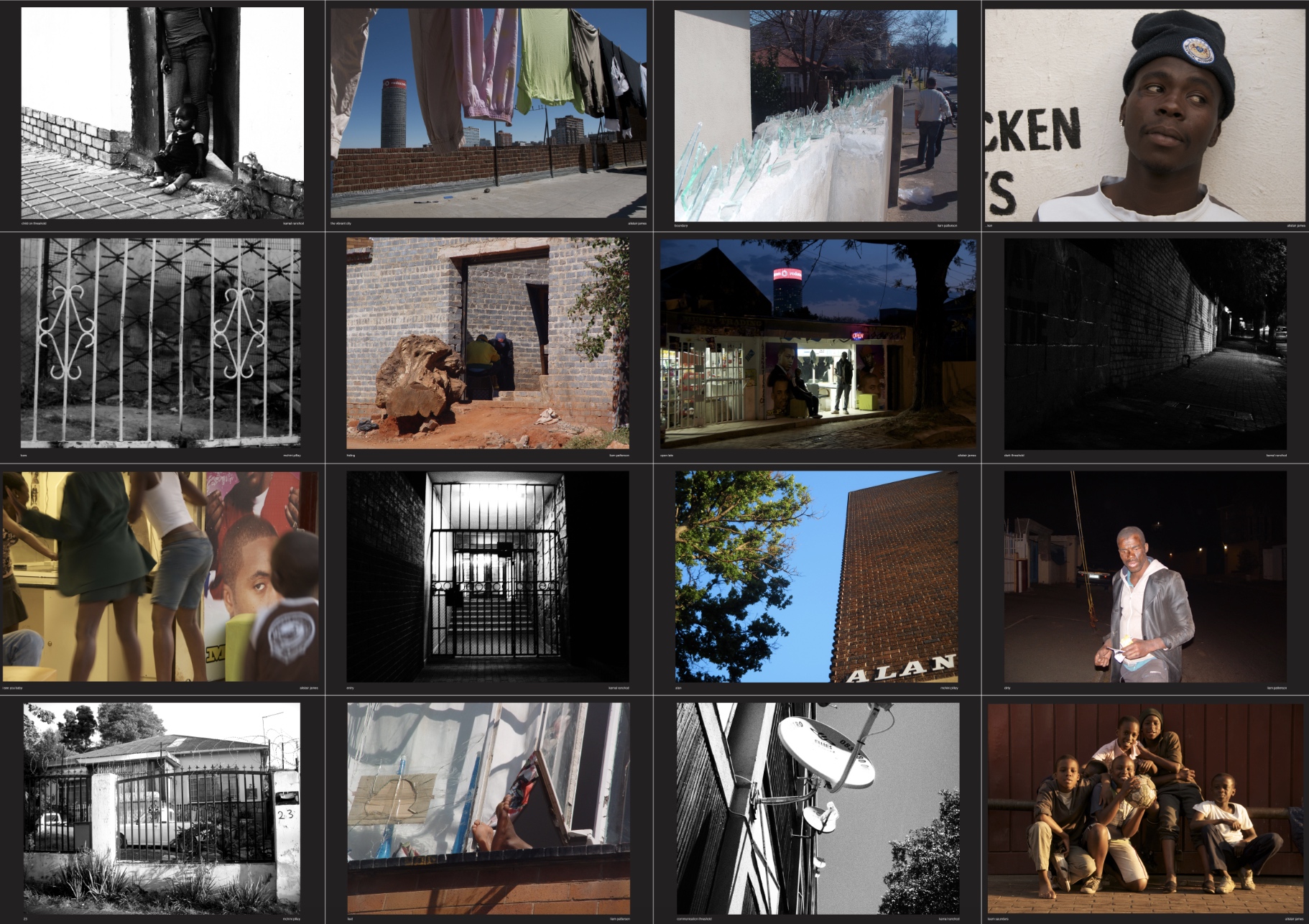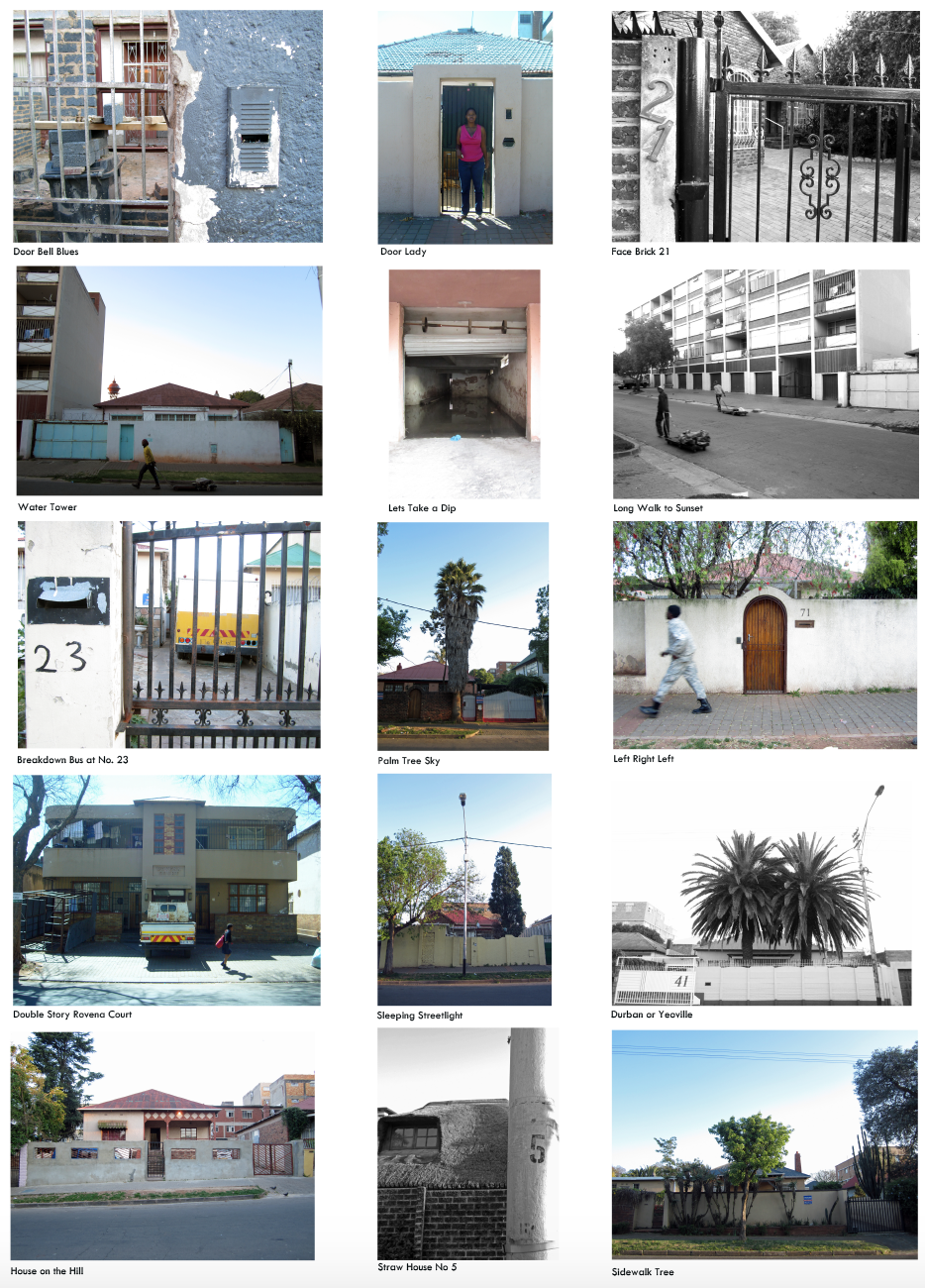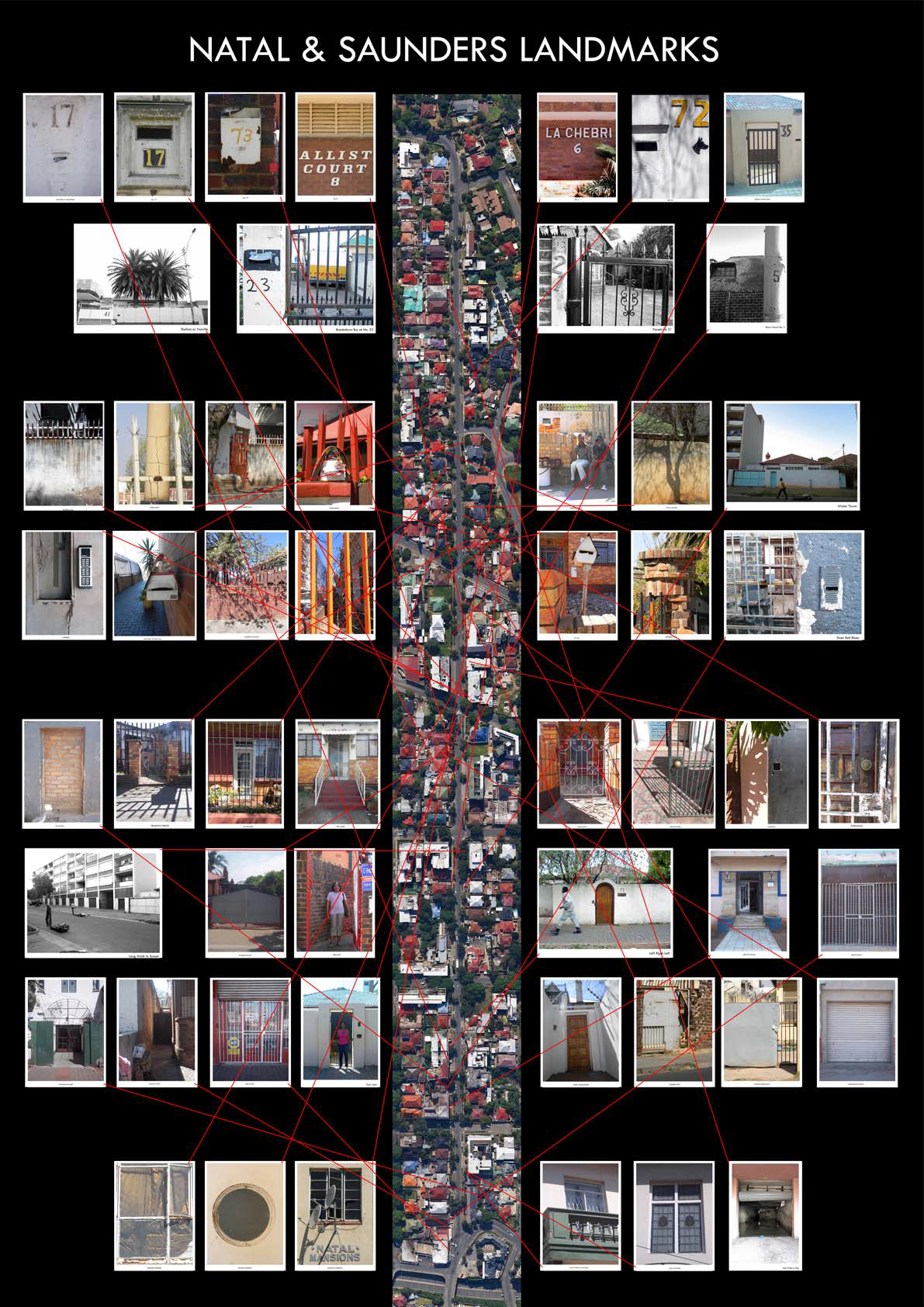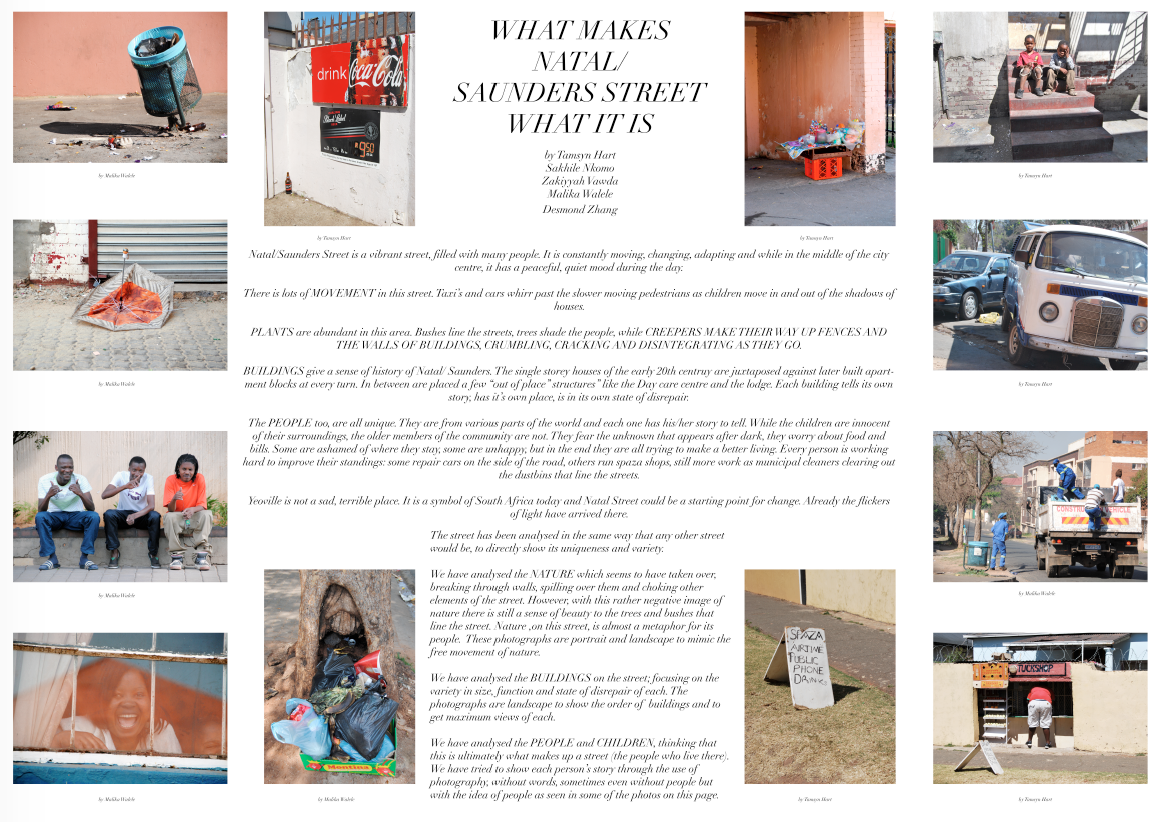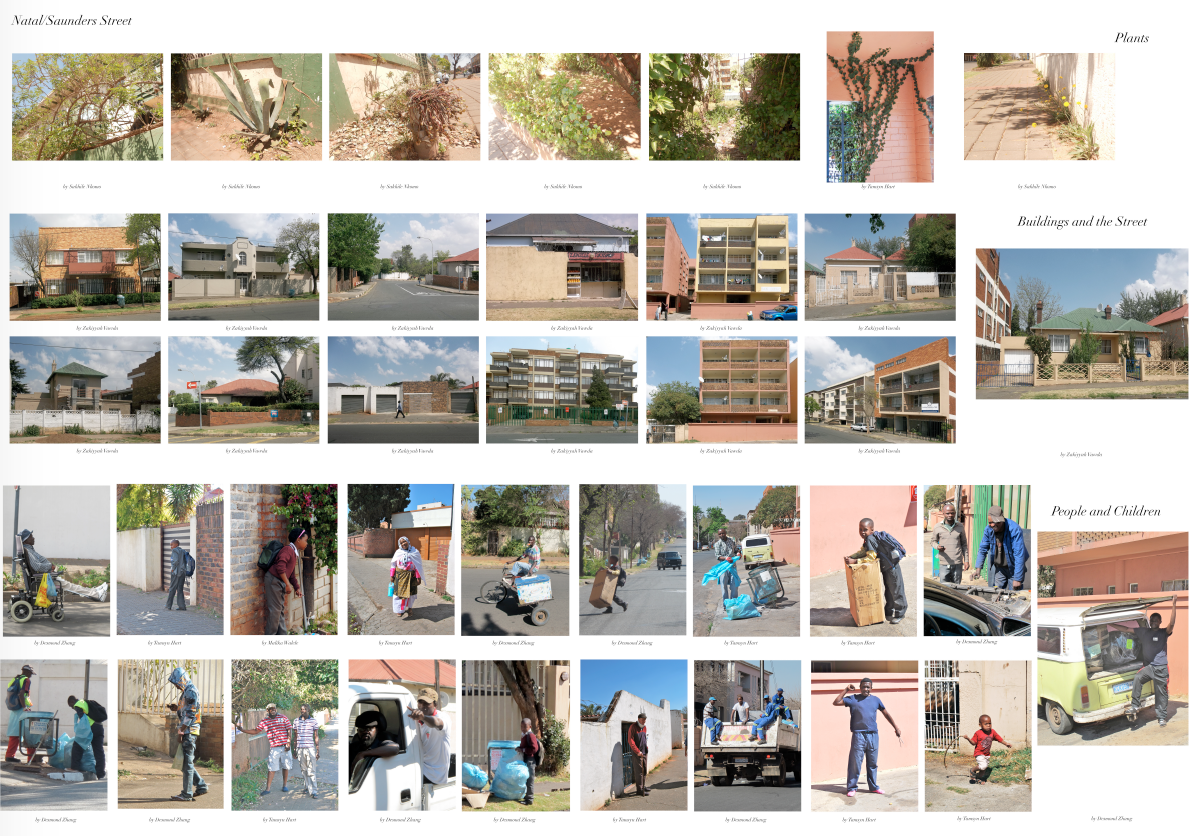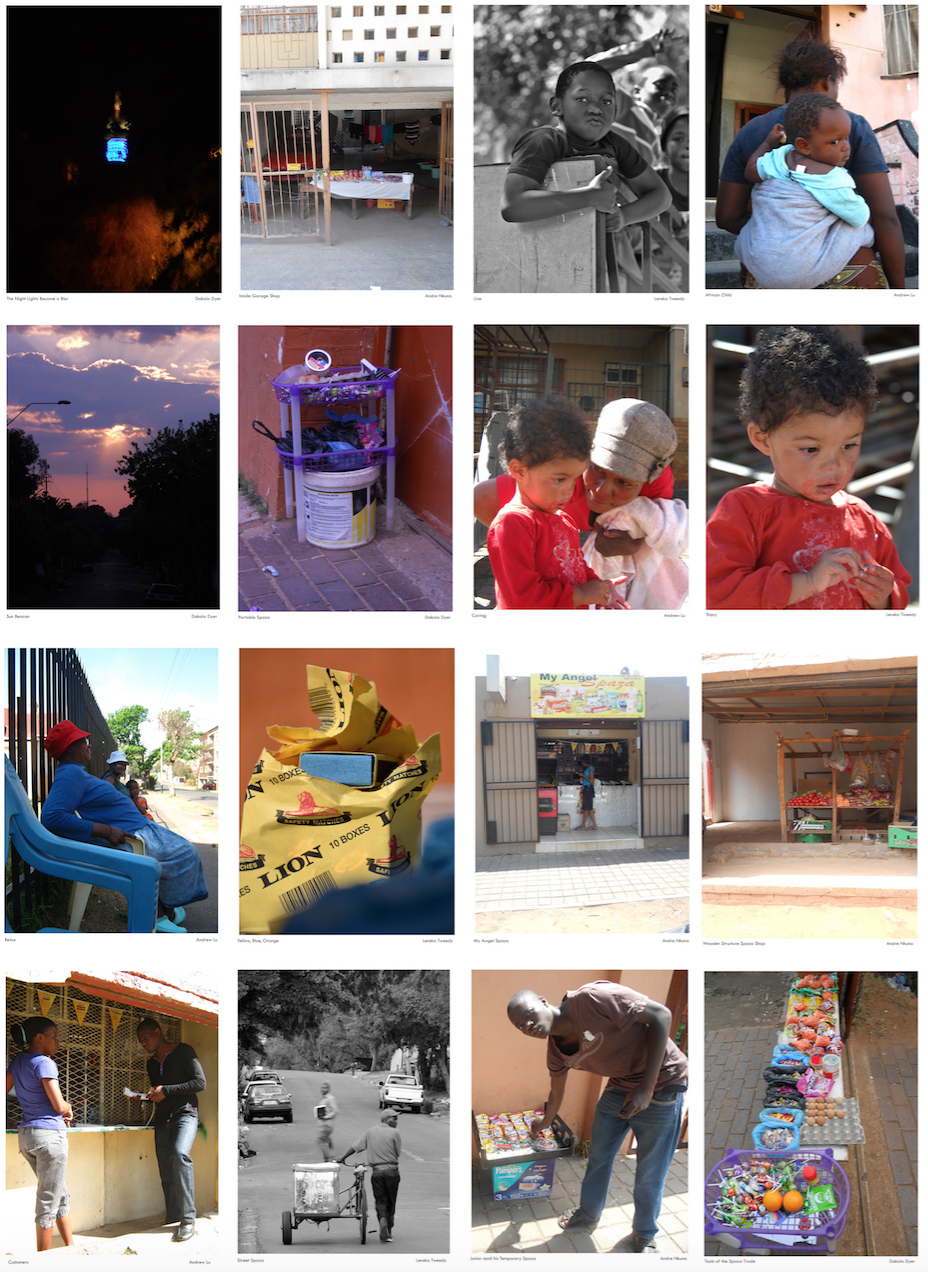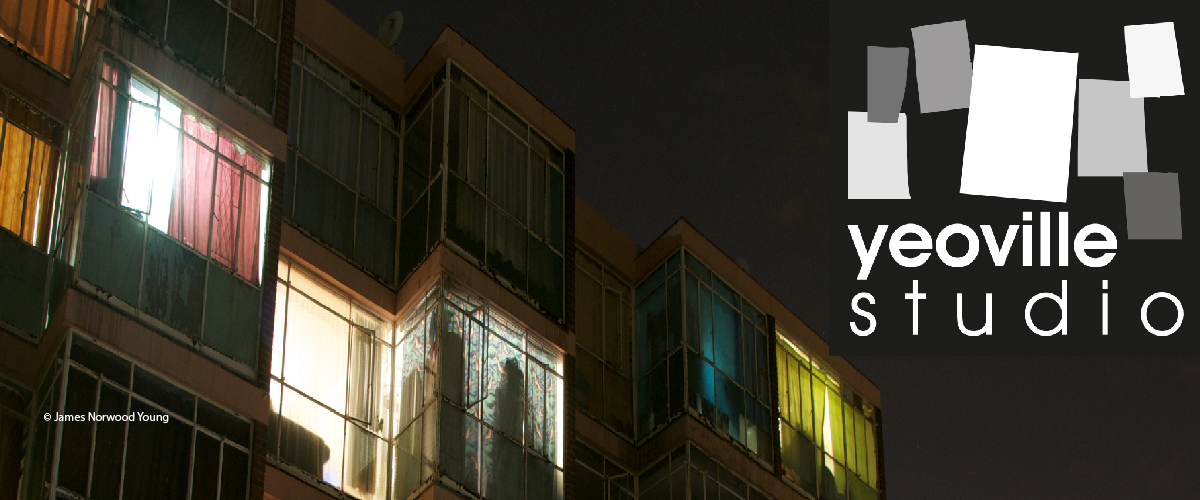
NATAL AND SAUNDERS STREET PORTRAITS
This street portrait emerged from a Wits photography course for architecture students, facilitated by Solam Mkhabela in 2011, together with Claire Bénit-Gbaffou. Students were asked to chose a lens through which to capture the street : its built and non-built environment as well as the social practices developing in it. They chose four themes, that they named "thresholds", "landmarks", "people-building-plants", and "spaza shops". They organised their vision of the street on photo panels.
Student work on Natal/Saunders Street
Organising the street exhibition
Then, the Studio organised an interactive exhibition in the street, to interact with street residents and users around the pictures.
The organisation itself was telling of the level of distrust existing in this particular section of Yeoville. Building owners were approached to enquire if we could use their locked garage door to hang and exhibit the pictures - they refused, out of fear their building and flats would be spotted and broken into. Yeoville Studio then invested a street corner and brought in its own big boards to hand the panels.
Students-residents engagement around Natal/Saunders street photographs
Students' collective panels were deconstructed, and each picture was standing on its own, posted on boards in the street. Pedestrians, residents, users were invited to select the picture they liked the most, the one they liked the least, and the one they thought captured the best what the street was. Staff and students sollicited individual comments or collective discussions around these choices.
It was interesting to all to grasp the difference between the students' and the residents and users' vision of the street through debate and interaction. Residents and users enjoyed the architecture students' gaze on their environment, spotting a detail or capturing moments that they were not, or no longer, seeing. Students and staff, enthralled by the aesthetic or ironic dimension of a photograph, had sometimes completely missed its social meanings. Discussion mixed a concern for the everyday aesthetics of the street environment and its social realities - where both parties learned, exchanged, and enjoyed.
A project facilitated by Solam Mkhabela and Claire Bénit-Gbaffou
